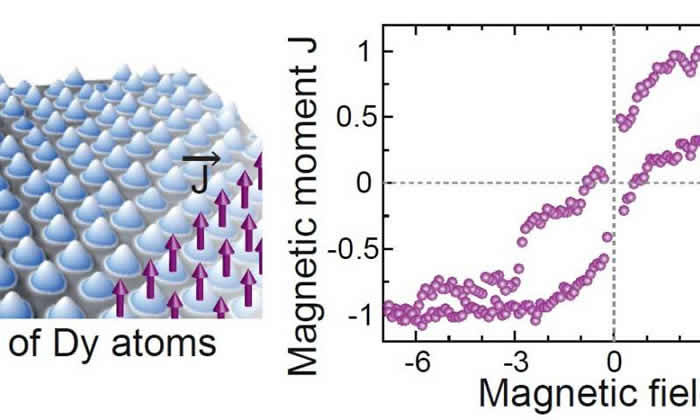
Scientists fabricate single-atom magnets on graphene
A superlattice of single-atom magnets on graphene have been fabricated with the density being 115TB per square inch, which suggests that, the configuration could lead to next-generation storage media.
Stefano Rusponi, a Physicist at the Ecole Polytechnique Fédérale de Lausanne (EPFL) and co-author of the new research said: “Single-atom magnets represent the ultimate limit for ultrahigh-density magnetic storage devices.”
He continued: “So far, researchers have mainly focused on the magnetic properties of single atoms and small clusters randomly distributed on the supporting surfaces.
“In our paper, we demonstrate the ability to realize a superlattice of single atoms having stable magnetization. This represents the first prototype of a storage media based on a single atom per bit.”
When using an array of atomic magnets as a data storage device, you face the key challenge to ensure that the magnets are stable and do not interact with each other, as this could result in data loss.

To address this challenge, the research team, led by Professor Harald Brune at EPFL, took advantage of the good magnetic properties of dysprosium atoms, along with the properties of the graphene-iridium substrate.
Part of the reason for the highly stable magnetization is because of the lattice mismatch between graphene and iridium, which creates a periodic moiré pattern. This periodic pattern leads to an equidistant arrangement of the most favorable dysprosium adsorption sites.
When the dysprosium atoms are deposited onto the substrate at about 40K, their surface diffusion is activated, which causes them to jump around on the surface. This motion allows them to reach the most favorable adsorption sites determined by the moiré pattern, so that they form a highly ordered array, with an average distance between atoms of just 2.5nm.
Once assembled, the atoms’ magnetic stability can be affected in a few ways, including by scattering with electrons and phonons on the surface, as well as by quantum tunneling of the magnetic states.
Luckily two of the beneficial properties of graphene are; it’s very low electron and phonon densities, which protects the dysprosium atoms against scattering. In addition, the dysprosium atoms have a favorable magnetic ground state that protects against quantum tunneling of the magnetization. Both properties contribute to the high magnetic stability of the superlattice.
Measurements showed that the superlattice has a very large magnetic hysteresis, which is a measure of the irreversibility of a magnet, which outperforms the best dysprosium-based single-ion molecular magnets.
The researchers explained that the high magnetic stability depends on all of the combined properties of the atoms and the graphene-iridium substrate, and that missing just one of these properties greatly reduces the stability.
One of the current drawbacks of the design is that the magnetic stability decreases at higher temperatures. In the future, the researchers plan to improve the superlattice’s thermal stability, possibly by growing graphene on an insulating substrate.
“The magnetic stability of the dysprosium atoms is limited to temperatures below 10K and is sensitive to contamination, thus requiring ultra-high vacuum conditions for our experiments,” Rusponi said.
Rusponi added: “In the future, we plan to improve the performances of the single-atom magnet superlattice. First, we intend to increase the maximum temperature at which the magnetic stability survives by finding the optimum combination of single atom species and supporting substrate. Second, we intend to protect the superlattice with a capping layer preserving the properties of the magnetic atoms.”
More information: Phys.org

Comments are closed, but trackbacks and pingbacks are open.